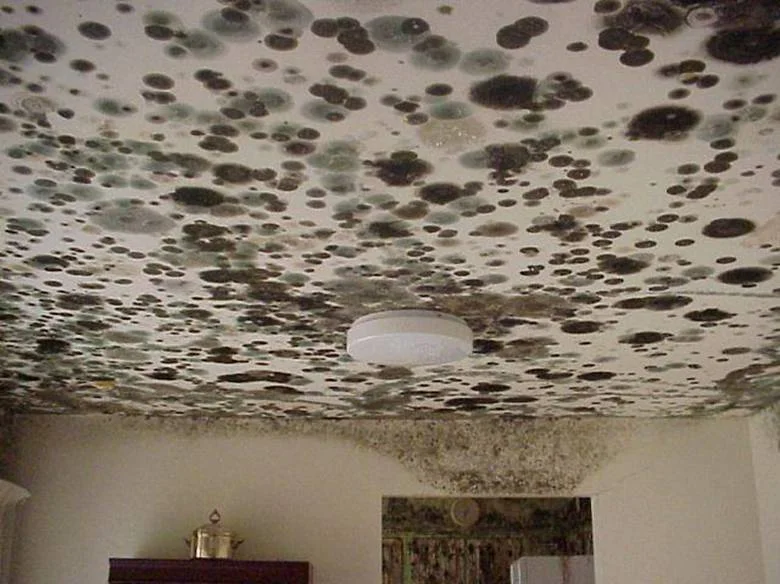Ulin log eaten by barnacles after years in the sea. Amazing wood, captivating transformation.
Finishing, what is Tung Oil?
Tung oil is a drying oil obtained by pressing the seed from the nut of the tung tree (Vernicia fordii). Tung oil hardens upon exposure to air, and the resulting coating is transparent and deep almost wet-look. Used mostly for finishing/protecting wood, after numerous coats the finish can even look plastic like. The oil and its use are believed to have originated in ancient China and appear in the writings of Confucius from about 400 B.C. Raw tung oil tends to dry to a fine wrinkled finish; the US name for this is gas checking: this property was used to make wrinkle finishes, usually by adding excess cobalt drier. To stop this, the oil is heated to gas-proof it, and most oils used for coating are gas-proofed. Thus, to avoid the wrinkling, all tung oil available for finishing today is "boiled".
Wood finishing
Tung oil is very popular today because of 2 properties: First it is natural or "green" product when it has dried. Secondly, after it cures (5 to 30 days, weather/temperature related), the result is a very hard and easily repaired finish. This is why it is used on boat decks and now on floors. The oil is often diluted with hydrocarbon thinner so that the viscosity is very low and enables the oil to penetrate the finest grain woods. This thinning vehicle evaporates within 15 to 20 minutes and results in a totally green residual finish. As mentioned above, when applied in many fine/thinner coats over wood, tung oil slowly cures to a satin "wetted wood" look with slight golden tint. Tung oil resists liquid water better than any other pure oil finish and does not darken noticeably with age and is claimed to be less susceptible to mould than linseed oil. Most importantly, of all the oil finishes, tung oil is the only drying oil that will polymerize 100% (completely harden). Linseed oil, for example, never completely hardens.
While tung oil has become popular as an environmentally friendly wood finish, it should be noted that many products labelled as "tung oil finishes" are deceptively labelled: polymerized oils, wiping varnishes, and oil/varnish blends have all been known to be sold as tung oil finishes (sometimes containing no tung oil at all), and all the above contain solvents and/or chemical driers. Product packaging will usually clearly state if it is pure tung oil.
Source wikipedia
New finishing available / Semi-smooth
First successful try at a new type of finishing, the semi-smooth. Enjoy the beauty of the inner Ulin while keeping a touch of its original look.
Earth day 2017
What are Earth day mission
Building the world’s largest environmental movement
Earth Day Network’s mission is to diversify, educate and activate the environmental movement worldwide. Growing out of the first Earth Day, Earth Day Network is the world’s largest recruiter to the environmental movement, working with more than 50,000 partners in nearly 200 countries to build environmental democracy. More than 1 billion people now participate in Earth Day activities each year, making it the largest civic observance in the world. We work through a combination of education, public policy, and consumer campaigns.
The first Earth Day on April 22, 1970, activated 20 million Americans from all walks of life and is widely credited with launching the modern environmental movement. The passage of the landmark Clean Air Act, Clean Water Act, Endangered Species Act and many other groundbreaking environmental laws soon followed. Twenty years later, Earth Day went global, mobilizing 200 million people in 141 countries and lifting environmental issues onto the world stage.
On that particular date Kaltimber will offer gift card to our instagram contest winners. Invitation sent by e-mail on 21th, stay in touch!
The long journey from disused factory to beautiful flooring starts here.
Ulin Kalimantan reclaimed from a disused factory. Soon in Bali and ready to be transformed in beautiful decking and/or flooring to live a second long life.
Moisture, inside sources.
Properly controlling the moisture levels in your home allows you to reduce the possibility of serious complications that can occur with hardwood flooring. Steam, leaky pipes, faulty appliances, breathing and ventilation errors are five common inside sources of moisture.
Steam: Steam comes in many forms. Showering, running the dishwasher and mopping all emit moisture into the air. Washing dishes by hand when you leave the hot water running emits moisture into the air. Letting anything simmer all day on a stove top contributes to the moisture levels as well. Dryer vents that are clogged or are not properly hooked up will let steam back into the house or will pump moisture directly into a crawl space or basement. When moisture is placed into the air of your home, it travels naturally into each room through natural air movements or with the help of centralized air or heating units.
Leaky pipes: Common sources of leaky pipes include bathroom fixtures, pipes under the kitchen sink, a dripping toilet and pipes that run through the walls or under the house. A cracked or broken pipe can let several gallons of water run within or underneath your home. Pipes that are exposed to temperature changes that cause dripping condensation can potentially also cause problems.
Faulty Appliances: Appliances such as freezers, refrigerators with ice makers and air conditioning units may produce condensation. This condensation can slowly drip in unseen areas by the homeowner.
Breathing: Breathing also emits moisture back into the air. Therefore if you have suddenly large gatherings of people in your home such as family gatherings or for entertainment events, more moisture than normal can be absorbed into the floor.
Ventilation Errors: Rooms that are closed off in the home for long periods of time can store moisture in the air that may have been seeping into the home from other areas. Closing off a room is commonly done to conserve heat in unused areas of the home or in situations where you’re only at a home for short period of times such as when you visit a vacation property. This can cause a musty smell. If hardwood flooring exists in these rooms then some of this excess moisture will be absorbed into the flooring.
Buying new Ulin should be heavily fined, here is why.
Eusideroxylon zwageri is a rare timber tree native to the Brunei, Indonesia, Malaysia and Philippines region. It is known colloquially in English as Bornean ironwood, billian, or ulin. It is a slow growing tree with an average 0.5 centimeters per year.
The decline of this species which was first noted in 1955. Browne (1955) stated: “Our surviving supplies of Ulin are by no means very large and undoubtedly dwindling.” Population reduction has been noted in the following regions: Kalimantan, Sumatra, Sabah, Sarawak, and the Philippines. IUCN has categorized it Vulnerable A1cd and A2cd. CITES listed II Bi (unsustainable level of exploitation from the wild for international trade). Regeneration in logged-over forests is limited.
The species is threatened by over-exploitation, predominantly by illegal migrant loggers. Current demand for the timber is fueled for its esteem among Chinese as a coffin wood (as it is resistant to insect and rot). Included in list of vanishing timber species of the Philippines and considered almost extinct in Sabah. In Java and Sumatra it exists solely in National Parks. Currently the situation is assessed as a serious depletion of stands. The species is only planted on a small scale because the supply of seeds and seedlings is inadequate. The world-famous IPB Bogor Agricultural Institute (Insitut Pertanian Bogor) is currently breeding a generation of plants more hardy than the wild harvested seeds.
Ulin is an endangered species and buying new Ulin (as you can often find even here in Bali!) or so called “reclaim Ulin” without any prove of its sustainability and how it was replaced is participating in the depleting of Indonesia’s forest and bringing Ulin always closer to extinction.
Some extracts from wikipedia.
Teak vs Teak
Teak Grades
Teak wood is available in three different quality grades which play the key role in outdoor performance and durability of the furniture. It is therefore highly important to know what is the difference between teak grades and how to distinguish between the highest quality teak and inferior timber.
Grade A Teak
Grade A teak is the highest quality teak wood. It refers to timber that is taken from the very centre of the log (heartwood) of a fully mature tree. Grade A teak can be recognised by a uniform, golden brown colour, close grains and glossy surface that feels oily to touch. It is high in teak natural oils which play the key role in teak outstanding resistance to outdoor elements by protecting it from unfavourable weather elements and repelling insects. Unfortunately, it makes up only about a fifth to one quarter of the log and as a result, it has a high price.
Grade B Teak
Grade B teak refers to timber from the outer heartwood section, making up about one fourth to one third of the log. In comparison to grade A teak, grade B teak has a lighter colour, uneven grain and less shine. It contains only traces of teak natural oils and as a result, it is unable to withstand the exposure to the outdoor extremes without protective treatments. But even then, it doesn’t last even close as long as furniture made from the highest quality teak.
Grade C Teak
Grade C teak is an inferior quality teak wood. It refers to timber from the outer sections of a mature log (sapwood) and logs of immature trees. Grade C teak contains virtually no teak natural protective oils, has a very uneven colour and is easily damaged because it is very soft. Furniture that is made from grade C teak is even considered unsuitable for indoor use due to its softness that makes it highly susceptible to damage. Although it is taken from the very same tree species, grade C teak has no similarity to the highest quality teak neither in regard to outdoor performance, beauty or durability. Grade C teak garden furniture is relatively inexpensive but it has a very short lifespan even if it is treated with protective coating or periodically oiled.
Important!
Please note that grade B and C teak garden furniture is sometimes chemically treated to make it look as if it would be made from the highest quality timber. It can be recognised by a darker colour but most people can’t really see the difference between the two, unless seen next to each other. If you are after the highest quality teak garden furniture, you are recommended to buy from reputable manufacturers who offer an extensive guarantee on their products.
Read it, plant it, enjoy it!
The Mainichi newspaper is one of the dailies most sold in Japan with its 5.5 million of prints sold per day. It is also a group that takes very seriously the issue on the protection of the environment. As a result, it seeks by all means to promote the ecological behavior, such as his newspaper which can be planted in a pot after reading.
Paper that can give a beautiful flower, it's an idea that may seem to us original, but which is already in vogue in the Japan. With the Mainichi newspaper, one can plant it and have a flower! Simply put crumbs of the paper in Earth and moisten it.
These "magical" papers are made of recycled paper with a mix of seeds of flowers and herbs. These papers are part of the "Green Newspaper" initiative, which was initiated by the Japanese advertising agency, Dentsu. The idea has been so successful that the Japanese have adopted it. This, even though the country of the sun rising is known by its large consumer society.
The goal of the "Green Newspaper" is not only ecological, but also to develop a new communication strategy with a product that respects the environment and that protects it from the most beautiful ways.
Protect your tropical wood deck from weather
Why seal my wood?
As you can see on the picture, nature can have a disastrous effect on your exterior wood. The natural effects of the sun and water will cause graying, fading, mildew, cupping, splintering, cracking and warping.
This is why it is necessary to seal your exterior wood. Properly sealing the wood will prevent water from seeping into cracks which causes cracking, cupping, bowing, and splintering. The UV protectors in our seal greatly reduce the effects of the sun, such as cracking, drying, and graying.
Wood is also, in many ways, a living, breathing thing. Wood expands and contracts when it is cold or hot. Wood needs to breathe and it also needs to be protected properly from the elements.
When should I have my deck sealed?
Anytime of the year is a good time to have your wood protected. You can ask us for advice.
Should I seal the wood myself?
Sealing your own deck may seem easy enough, but many times homeowners create irreversible damage to their deck. Not pressure washing properly, using a corrosive chemical on your deck, or using the wrong sealant can be disastrous, and your deck can NEVER be repaired 100%. Considering the fact that most sealants only last 6 months to a year, you are the stuck with the predicament of what to do then. Do you have to strip it all off using strong chemicals? Or should you recoat over existing faded seal, which will not give your deck a uniform look? Or you could wind up paying a professional a much higher fee to repair the damage. The best solution is to have it done properly the first time. For that also feel free to ask us and we’ll be pleased to assist and guide you.







